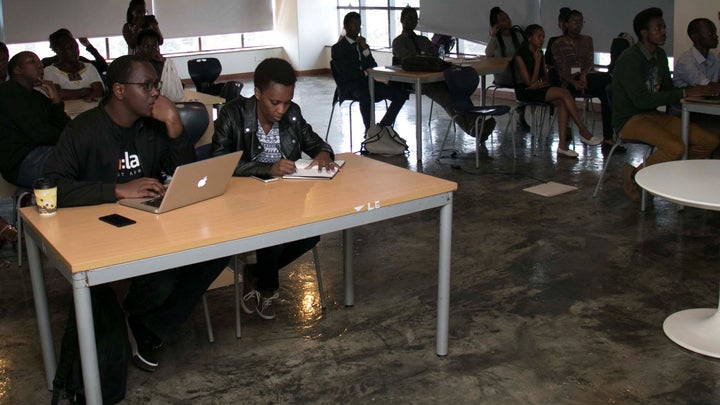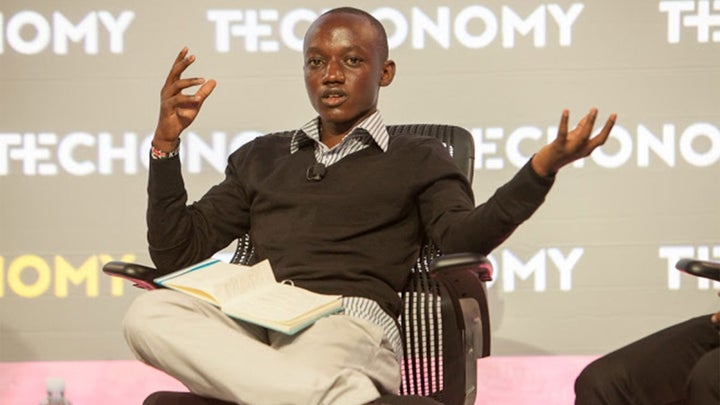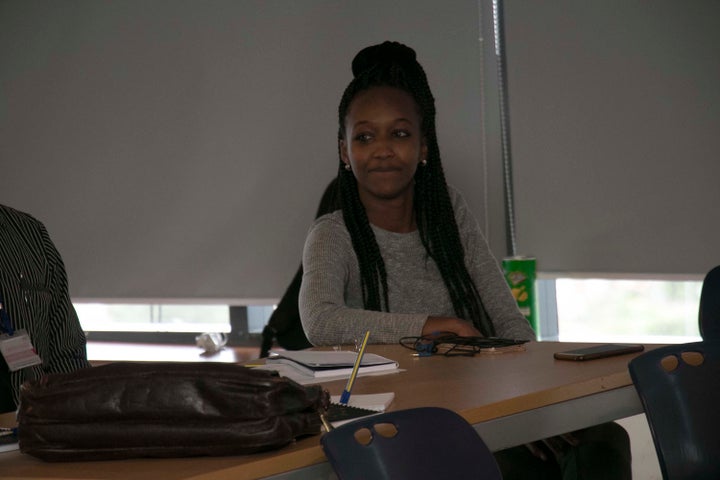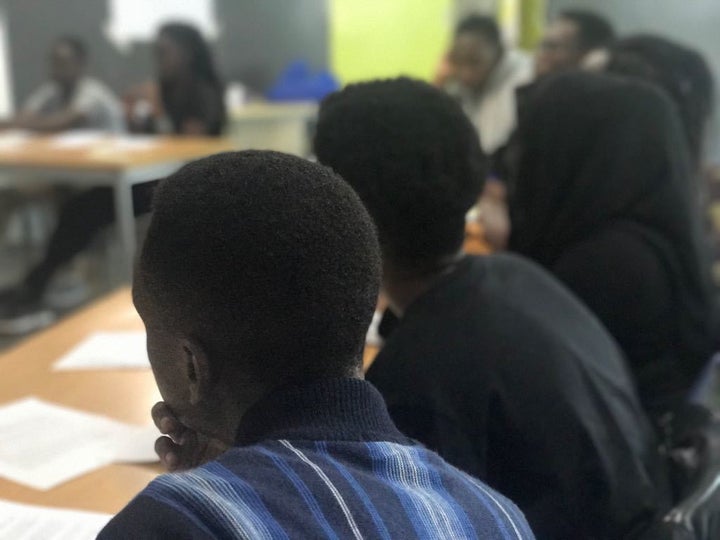By empowering students with the creative freedom to design way into the future, we lay a fundamental foundation for national development

Evaluation of innovation Showcase by CampBuni judges.
Sadly, today’s conventional curricula is simply a reminiscence of neocolonialism. Chika Ezeanya-Esiobu, in her TED talk ‘How Africa can use its traditional knowledge to make progress’ vividly points out how A-for-Apple-education has been--and still being--instilled in us, a land where Apples clearly don’t grow wild. Then, what is African education? What is African education if existing education systems steer us in pursuit of conventional employment trains? What is African education if doesn’t solve our own problems and instead is steered to solving problems for others?
Is it a system that embraces love for problems or dread for problems?

Leroy speaking at Techonomy 14 panel, ‘Africa’s re-invention generation’
When I was in Grade 10, I was lucky enough to be selected to be part of an innovation camp on Human Centered Design Thinking thanks to a renewable energy project I was working on which now is offering clean renewable Biogas solutions from everyday waste while offering sustainable income to local communities being served.
As I advanced academically, my reality was further separated by my secondary school (high school) education. My mindset took a turn for the better. I guess the epitome of it was after my panel discussion, ‘Africa the re-invention generation’ at the Techonomy Conference in 2014 with my mentor Dr. David Sengeh, a Research Scientist at IBM Research Africa, Nairobi from Sierra Leone. There, we argued for what matters in Africa. I was probed on what my goals in life where and what would happen if I don’t get achieve them. Honestly, a conversation that challenged me to do for humanity suffers and cares about: Equality, Economic prosperity and Peace.
Disrupting for good
For quite sometime now I’ve spent my time deliberately learning and unlearning, failing and succeeding in search of a tool that could probably lead me to this path to Africa’s remedy. From random conversations with strangers, calls and moderated discussions, I couldn’t find a better tool than Human Centered Design Thinking.
When I graduated from my national public high school at Maseno in 2015, I interned part time for 8 months as a Primary Facilitator with Global Minimum, an international NGO based in Kenya advocating for creative thinking amongst high school students and supporting science projects solving for the community’s needs. Here, I was keen on learning managerial expertise in strategic planning and execution on the different components of innovation camps. Perhaps my most reflective internship yet.
This year, together with close friends, we set out to kick off CampBuni, a platform where many more high school students could access to this type of education. CampBuni’s vision of creating problem lovers is deeply embedded in the key components of Human Centered Design Thinking: Creative thinking, Empathy, Critical thinking and Resourceful thinking. Through these pillars, we engage primarily high school students. Teaching them skills for tackling problems their local communities face. With our first ever camp, we held a five-day camp at iHub Nairobi’s space in conjunction with our partners Moringa School and Chandaria Industries.

One of CampBuni’s guests during the Innovation Showcase
Energy driving the HCDT revolution
What struck me most from our first camp was *Tato, an Eritrean participant who spent most of his life as a refugee. His deep enthusiasm throughout the programme stood out and spark stood out from his peers. In my view, Tato is not only a beacon hope for his nation and Africa as a continent but a solution to Africa’s tomorrow. It’s in seeing such spirits that give me hope for Africa and a sense of fulfilment. Sadly, such content has no place in our curriculum. Working with relevant stakeholders in the education sector, we hope to change the narrative by making such content available to them at that ripe age. At CampBuni, we believe that the even the biggest project begins with small steps. We are open to collaboration with our work in charting a way to re-invent Africa’s education landscape.

During one of CampBuni’s sessions
People need it
While seeking for partners for our first ever camp we were, however, not surprised when one of them asked us to instead teach their staff our content. It’s evident the demand for HCDT spans across to both corporate and governmental organizations. According to the Ministry of Education, Science and Technology in Kenya 2,310,066 students are enrolled to high school. But even if we get it across the board, how do we make sure it’s a sustainable curve?
Bottom line—Africa needs HCDT by the people for the people.
*Tato—Name altered for the privacy and protection of identity.
